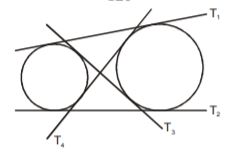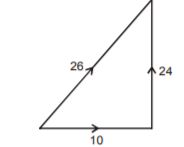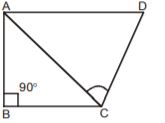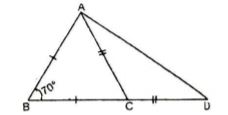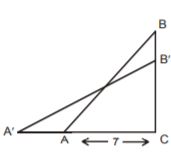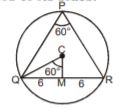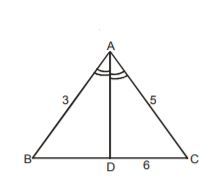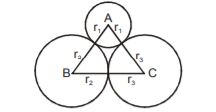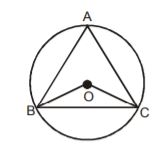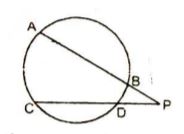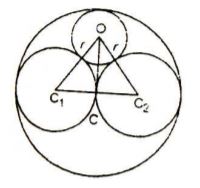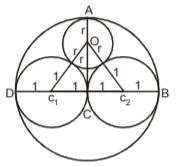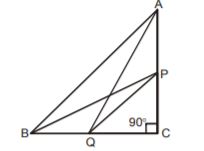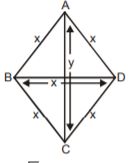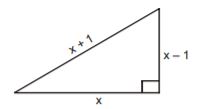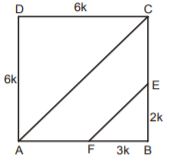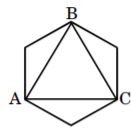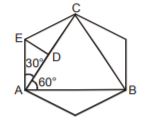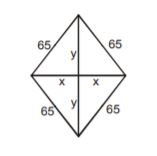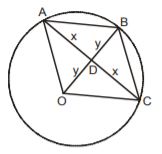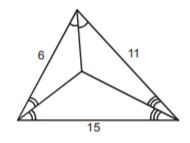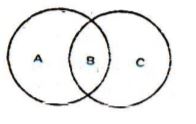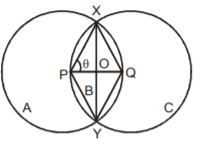 Introduction
Introduction
Geometry is a branch of mathematics concerned with questions of shape, size, relative position of figures, and the properties of space. A mathematician who works in the field of geometry is called a geometer. The article Geometry Practice Quiz provides information about Geometry, a important topic of Mathematics Consists of different types Geometry questions with solutions useful for candidates preparing for different competitive examinations like RRB .RRB ALP/Technical Exams/Junior Engineer Recruitment Exams, SSC CGL, IBPS, SBI PO, SBI Clerks, CAT and etc.
 Quiz
Quiz
1. The circumcentre of a triangle is always the point of intersection of the
- A. Medians
B. Perpendiculars bisectors
C. Altitude bisector
D. Perpendiculars dropped from the vertices on the opposite sides of the triangle
- A. 180 m
B. 100 m
C. 150 m
D. 120 m
- A. 4
B. 3
C. 2
D. 1
- A. 60º
B. 80º
C. 90º
D. 45º
- A. 26 m
B. 24 m
C. 28 m
D. 30 m
- A. 9
B. 11
C. 15
D. 12
- A. 16
B. 24
C. 18
D.
- A. octagon
B. hexagon
C. dodecagon
D. pentagon
- A. 90º
B. 60º
C. 30º
D. None of theseº
- A. Right-angled
B. Obtuse-angled
C. Equilateral
D. None of these
- A. 16 m
B. 12 m
C. 14 m
D. 15 m
- A. 55
B. 27 .5
C. 60
D. 30
- A. 3 : 4
B. 4 : 3
C. 2 : 1
D. 1 : 2
- A. 2 m
B. 4 m
C. 8 m
D. 16 m
- A. 45 m
B. 60 m
C. 75 m
D. 120 m
1. Suppose it is 3 o’clock. After 20 minutes the angle between the smaller and bigger hands
will be
- A. 20º
B. 30º
C. 110º
D. 120º
- A. [latex]\frac{4}{3} \sqrt{3}[/latex] cm
B. 4 [latex]\sqrt{3} [/latex] cm
C. 4 [latex]\sqrt{2} [/latex]
D. [latex]\frac{4}{3} \sqrt{2}[/latex] cm
- A. 4.5 [latex]{m}^{2}[/latex]
B. 5.4 [latex]{m}^{2}[/latex]
C. 9 [latex]{m}^{2}[/latex]
D. 81 [latex]{m}^{2}[/latex]
- A. Rhombus
B. Rectangle
C. Square
D. Parallelogram
- A. is trisected at the point
B. is bisected at the point
C. passes through the center
D. none of these
- A. 2 cm
B. 2.25 cm
C. 2.5 cm
D. 3 cm
- A. 10
B. 14
C. 12
D.
- A. 74
B. 106
C. 53
D. 37
- A. 3.0 cm
B. 3.5 cm
C. 4.0 cm
D. 4.5 cm
- A. 5
B. [latex]\frac{3}{2}[/latex]
C. [latex]\frac{2}{3}[/latex]
D. None of these
- A. 3.5 cm
B. 1.75 cm
C. 1 cm
D. 0.875 cm
- A. 4 ([latex]B{C}^{2}[/latex]
B. 5 ([latex]A{B}^{2}[/latex]
C. 2 ([latex]A{C}^{2}[/latex]
D. 2 ([latex]B{C}^{2}[/latex]
- A. [latex]\sqrt{3} [/latex] : 1
B. [latex]\sqrt{2} [/latex] : 1
C. 3 : 1
D. 2 : 1
- A. 5
B. 4
C. 1
D. 0
- A. 63 m
B. 36 [latex]\sqrt{2}[/latex] m
C. 63 [latex]\sqrt{2} [/latex] m
D. 72 [latex]\sqrt{2} [/latex] m
1. Two circles touch each other internally. Their radii are 2 cm and 3 cm. The biggest chord of the outer circle which is outside the inner circle is of length
- A. 2 [latex]\sqrt{2}[/latex] cm
B. 3 [latex]\sqrt{2} [/latex] m
C. 2 [latex]\sqrt{3} [/latex] cm
D. 4 [latex]\sqrt{2} [/latex] m
- A. 39.2 [latex]{cm}^{2}[/latex]
B. 19.6 [latex]{cm}^{2}[/latex]
C. 122.5 [latex]{cm}^{2}[/latex]
D. 61.25 [latex]{cm}^{2}[/latex]
- A. [latex]\frac{3p}{\sqrt{2}}[/latex]
B. [latex]\frac{\sqrt{2}p}{3}[/latex]
C. [latex]\frac{\sqrt{3}p}{2}[/latex]
D. [latex]\frac{2p}{\sqrt{3}}[/latex]
- A. 125, 35
B. 126, 32
C. 132, 26
D. 135, 25
- A. [latex]\frac{1}{\sqrt{a}}[/latex] - [latex]\frac{1}{\sqrt{b}}[/latex] = [latex]\frac{1}{\sqrt{c}}[/latex]
B. [latex]\frac{1}{\sqrt{b}}[/latex] - [latex]\frac{1}{\sqrt{a}}[/latex] = [latex]\frac{1}{\sqrt{c}}[/latex]
C. [latex]\frac{1}{\sqrt{a}}[/latex] + [latex]\frac{1}{\sqrt{b}}[/latex] = [latex]\frac{1}{\sqrt{c}}[/latex]
D. None of these
- A. 64 m
B. 8 m
C. 32 m
D. 46 m
- A. [latex]\frac{5 \sqrt{2}}{4}[/latex]
B. [latex]3 \sqrt{2}[/latex]
C. [latex]6 \sqrt{2}[/latex]
D. [latex]\frac{4 \sqrt{2}}{5}[/latex]
- A. [latex](\frac{8}{3})\pi[/latex]
B. [latex](\frac{4}{5})\pi[/latex]
C. [latex]4 \pi[/latex]
D. [latex](\frac{5}{3})\pi[/latex]






